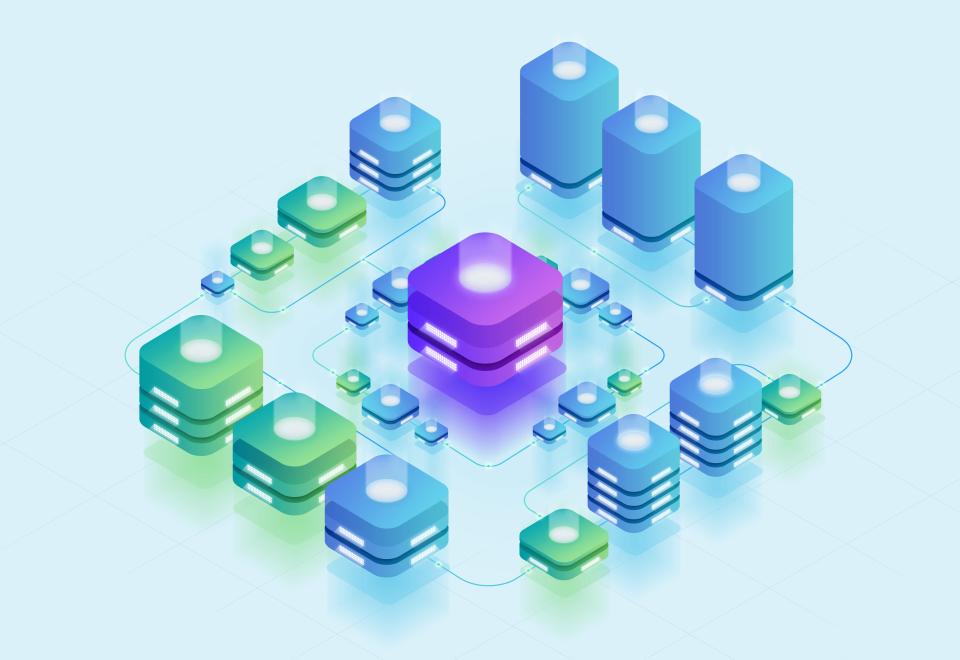Alright, let's dive in. Your website is the digital face of your business, your 24/7 salesperson, your global storefront. But what if it’s sputtering, unreliable, or worse, a wide-open door for digital thieves?
You wouldn't pour cheap, dirty fuel into a high-performance sports car, would you? Or skip its essential servicing for years on end? Yet, countless businesses, after investing fortunes in stunning web design and clever development, make exactly that mistake with their website's engine room: its hosting and ongoing maintenance. They treat these critical components as an afterthought, a box to tick, and then wonder why their site crawls, crashes, or gets hacked. This oversight doesn't just lead to a frustrating experience for your visitors; it actively sabotages your business goals, bleeds revenue, and damages your hard-won reputation.
This isn't just another tech lecture. This is about arming you with the knowledge to make smart choices. We're going to pull back the curtain on web hosting strategies and website maintenance best practices that transform your online presence from a potential liability into a powerhouse asset. Get ready to discover how robust hosting and proactive upkeep can ensure your website remains lightning-fast, iron-clad secure, consistently up-to-date, and ultimately, streamlines your entire web development process, freeing you to focus on what you do best: growing your business. At CaptivateClick, we've seen firsthand how a solid foundation in hosting and maintenance can revolutionize a website's effectiveness, and we're here to show you how.
Decoding Web Hosting: More Than Just Server Space
Think hosting is just some rented digital closet for your website files? Think again. Your hosting choice is the bedrock of your entire online presence, and picking the wrong one is like building a skyscraper on quicksand. It’s a decision that screams for careful consideration, because the stakes? They’re sky-high.
Why Your Hosting Choice Matters (The Stakes)
Your website's speed, or lack thereof, is a make-or-break factor. Did you know that a mere one-second delay in page load time can result in a 7% reduction in conversions? For an e-commerce site making $100,000 per day, that one-second delay could cost $2.5 million in lost sales every year. Slow sites don't just lose sales; they plummet in search engine rankings, frustrating users and sending them straight to your competitors. As Luminite Design highlights, over 53% of mobile users will abandon a page if it takes longer than three seconds to load, a devastating statistic in our mobile-first world.
Then there's uptime – the measure of your website's availability. Imagine your physical store randomly closing its doors during peak business hours. That's precisely what website downtime does to your online revenue and customer trust. While top-tier providers like AWS boast a 99.99% uptime guarantee, meaning virtually zero interruptions, a provider offering just 99.5% uptime could mean your site is down for over 43 hours a year! And security? Shoddy hosting is an open invitation to hackers. Weak security can lead to devastating data breaches, tarnishing your brand and potentially incurring massive fines.
Finally, consider scalability. Your business aims to grow, right? Your hosting needs to grow with you, effortlessly handling surges in traffic without a hiccup. If your hosting can't scale, your growth is capped, your ambitions stifled. Choosing the right hosting isn't a minor detail; it's a strategic imperative for survival and dominance in the digital arena.
Key Types of Web Hosting
Navigating the world of web hosting can feel like alphabet soup. Let's demystify the main players so you can choose wisely, ensuring your website has the power and flexibility it demands. Each type comes with its own set of advantages and trade-offs, tailored to different needs and budgets.
First up is Shared Hosting. This is the budget-friendly entry point, where your website shares server resources (like CPU, RAM, and disk space) with hundreds, sometimes thousands, of other websites. It's cheap, yes, but you get what you pay for: limited resources, potential slowdowns if a neighboring site hogs resources (the "noisy neighbor" effect), and often, less robust security. It’s suitable for very small personal blogs or brochure sites with minimal traffic, but businesses quickly outgrow its limitations.
Next, VPS (Virtual Private Server) Hosting offers a significant step up. While still sharing a physical server, a VPS carves out a dedicated slice of resources just for your website, offering more control, better performance, and improved security compared to shared hosting. It’s a good middle-ground for growing businesses that need more power but aren't ready for a dedicated server. However, as AWS points out when comparing dedicated servers and VPS, VPS plans can still have predefined resource limits that might hinder rapid, unpredictable scaling compared to true cloud solutions.
For the ultimate in power and control, there's Dedicated Server Hosting. Here, you lease an entire physical server exclusively for your website(s). This means maximum performance, top-tier security (if managed correctly), and complete control over the server environment. It's the choice for high-traffic websites, large e-commerce stores, and applications with demanding resource needs. The downside? It's the most expensive option and typically requires significant technical expertise to manage, unless you opt for managed dedicated hosting.
Then we have Cloud Hosting, the modern marvel of scalability and reliability. Instead of relying on a single server, cloud hosting utilizes a vast network of interconnected servers. This means resources can be scaled up or down almost instantly to meet demand, you often pay only for what you use, and it offers high reliability because if one server fails, others in the network pick up the slack. Platforms like AWS and Azure are leaders here, with Azure's architecture designed for secure and scalable solutions across industries. While pricing can sometimes be complex, the flexibility is unparalleled. In fact, Google Cloud's infrastructure can reduce page load times by up to 50% compared to some traditional hosting setups.
Finally, and often the smartest choice for businesses wanting to focus on their core operations, is Managed Hosting. This isn't a distinct type so much as a service layer that can apply to VPS, Dedicated, or Cloud hosting (e.g., Managed WordPress Hosting). With managed hosting, the provider takes care of the technical heavy lifting: server setup, software updates, security monitoring, backups, performance optimization, and technical support. This frees you from server administration headaches. For instance, WP Engine, a managed WordPress host, automates core updates and offers server-level optimizations that can significantly boost site speed and security, making it a compelling option for businesses that value peace of mind and expert support.
Essential Factors for Choosing a Hosting Provider & Plan ("Web Hosting Strategies")
Choosing a hosting provider isn't like picking a candy bar; it's a critical decision that impacts your website's pulse. You need to look beyond flashy ads and dig into the real meat: the features that guarantee your site's health and your peace of mind. These are the non-negotiables for any serious web hosting strategy.
First and foremost, scrutinize their Security Features. Are SSL certificates included and easily implemented? What about robust firewalls, proactive malware scanning, and DDoS protection? These are your digital bodyguards. For example, SiteGround’s AI anti-bot system blocks millions of daily threats, showcasing the kind of proactive defense you need in your corner. Don't settle for less; your data and your customers' trust depend on these secure hosting solutions.
Next, dive deep into Performance Metrics. Where are their servers located relative to your target audience? Do they use lightning-fast SSD (Solid State Drive) storage? Is a Content Delivery Network (CDN) integrated or easily available to speed up content delivery globally? What caching technologies do they employ? These elements are the horsepower under your website's hood. Remember, GoDaddy emphasizes fast loading with their hosting solutions because speed directly impacts user experience and SEO.
Then, demand Reliability & Uptime Guarantees, backed by a Service Level Agreement (SLA). What percentage of uptime do they promise (aim for 99.9% or higher), and what are the repercussions if they fail to meet it? This isn't just a number; it's their commitment to keeping your business online. Also, investigate their Backup & Restore Solutions. How often are backups performed? Are they stored off-site? How easy is it to restore your site if disaster strikes? This is your safety net.
Consider Scalability Options. As your business flourishes and traffic surges, can your hosting plan grow with you seamlessly, without painful migrations or extended downtime? And what about Customer Support? Is it available 24/7 through multiple channels? Are their support agents knowledgeable and quick to respond? When you're in a bind, expert help is priceless.
Finally, look at the Control Panel & Ease of Use (like cPanel or Plesk) and, of course, Pricing & Value. Don't just chase the cheapest option. Evaluate the overall value: the features, reliability, support, and security offered for the price. Your website is too important to entrust to the lowest bidder without due diligence.
Proactive Power: Implementing Effective Website Maintenance Routines ("Website Maintenance Best Practices")
So, you've chosen a stellar hosting provider. Fantastic! But your job isn't done. Think of it like buying that dream car; it still needs regular oil changes, tire rotations, and check-ups to keep it purring. Ongoing website maintenance is that essential servicing for your digital asset, and neglecting it is a fast track to trouble.
Why Ongoing Maintenance is Non-Negotiable
Ignoring website maintenance is like playing Russian roulette with your online presence. The digital landscape is constantly evolving, with new cyber threats emerging daily. Failing to apply security patches and updates to your website's core software, themes, and plugins leaves gaping holes for hackers to exploit. In fact, Kinsta highlights that many WordPress vulnerabilities stem from outdated plugins or themes, making regular updates a cornerstone of security.
But it's not just about fending off villains. Proactive maintenance is crucial for ensuring optimal performance. Over time, your website's database can become bloated with unnecessary data like post revisions and spam comments, slowing it down. Images might not be optimized, and code can become inefficient. Regular clean-ups and optimizations keep your site lean, mean, and lightning-fast, which is vital for user experience and SEO. A slow, clunky website frustrates visitors and sends them clicking away – often for good.
Furthermore, software compatibility is a moving target. As browsers, operating systems, and server technologies update, your website components need to keep pace to avoid broken features or a complete site meltdown. And let's not forget data protection; regular, reliable backups are your ultimate insurance policy against data loss from hacking, server failure, or human error. Ultimately, diligent website maintenance best practices enhance user experience by fixing broken links, ensuring forms work, and keeping everything running smoothly, safeguarding your investment and your reputation.
Core Website Maintenance Tasks (The "What")
Alright, you're convinced. Maintenance is vital. But what exactly does it entail? Let's break down the essential chores that keep your website in peak condition, ensuring it’s a well-oiled machine ready to serve your audience and achieve your business goals.
First on the list: Regular Backups. This is non-negotiable. You need full site backups (both files and the database) performed frequently – daily for active sites, weekly at a minimum for others. Ensure these backups are automated and, crucially, stored off-site (e.g., in the cloud) so they're safe even if your server has a catastrophic failure. Many quality hosts, like those Kinsta describes for managing multiple WordPress sites, offer robust, automated backup solutions.
Next, Software Updates. This includes your Content Management System (CMS) core (like WordPress or Drupal), as well as all themes and plugins/extensions. Hackers love to exploit known vulnerabilities in outdated software. Crucially, always test updates on a staging site first! A staging environment, as explained by InstaWP, is a clone of your live site where you can safely test changes without risking your public-facing website. This simple step can prevent a world of pain.
Then comes Security Monitoring & Scans. Regularly scan your site for malware and vulnerabilities. Many security plugins and services offer automated scanning and alerts. Also, monitor for suspicious activity in your server logs. This vigilance helps you catch potential threats before they escalate into full-blown breaches.
Don't forget Performance Checks. Use tools like Google PageSpeed Insights or GTmetrix to test your page load speed. Check for broken links, ensure your site is mobile-responsive, and look for any elements that might be slowing things down. Optimizing images and leveraging browser caching are common recommendations from performance checklists that can yield significant speed improvements. You can also explore advanced technical SEO tactics for performance to really fine-tune your site.
Database Optimization is another key task. Over time, your database can accumulate clutter like old post revisions, spam comments, and transient options. Cleaning these out helps keep your database lean and efficient, contributing to faster query times and overall site speed. Many CMS platforms have tools or plugins to help with this.
Perform regular Functionality Testing. Click through your website as a user would. Test your contact forms, checkout processes (if applicable), and any interactive elements. What works perfectly today might break tomorrow after an update, so consistent testing is key to a smooth user experience.
Optionally, but highly recommended, is a periodic Content & SEO Review. Check for outdated information on your pages and posts. Look for opportunities for on-page SEO tweaks, like optimizing meta descriptions or adding internal links. This ensures your content remains fresh, relevant, and discoverable, which can be further enhanced by understanding essential SEO strategies for website ranking.
Creating a Maintenance Schedule (The "When")
Knowing what to do is half the battle; knowing when to do it ensures consistency and prevents tasks from slipping through the cracks. A well-defined maintenance schedule is your roadmap to a perpetually healthy website. Think of it as your website's personal fitness plan.
Some tasks demand daily attention. Daily security monitoring and ensuring your automated backups have run successfully are paramount. You wouldn't leave your front door unlocked overnight, so don't leave your website exposed. Many modern hosting solutions and security plugins can automate much of this, but a quick daily check provides peace of mind.
Other tasks can be handled on a weekly basis. This is a good time to check for and apply plugin/theme updates (always after testing on a staging site, remember?). It's also a good interval for comment moderation to keep spam at bay and engage with legitimate user interactions. Checking for broken links can also fit well into a weekly routine.
Monthly, dedicate time for a more thorough review. Conduct full site reviews, run performance tests using tools like PageSpeed Insights, and perform database optimization to clear out accumulated cruft. This is also a good time to review security logs in more detail and check for any unusual activity. According to WorkTrek, proactive maintenance, which includes such regular checks, can prevent up to 28% of potential downtime incidents.
Finally, on a quarterly or annual basis, take a step back for a strategic overview. Review your hosting plan – does it still meet your needs in terms of resources, features, and cost? Conduct a comprehensive security audit. Perform a content audit to identify underperforming content, opportunities for updates, or content gaps. These less frequent but crucial reviews ensure your website strategy remains aligned with your business goals.
Streamlining Development: How Smart Hosting & Maintenance Pay Off
Investing in top-notch hosting and diligent maintenance isn't just about keeping your current website alive and well; it's a strategic move that profoundly streamlines your entire web development process. Stop thinking of it as an expense, and start seeing it as an investment that yields significant returns in efficiency, security, and sanity for your development team.
Imagine a world with Reduced Downtime & Faster Issue Resolution. That’s the reality with quality hosting support and proactive maintenance. Good hosts often detect and fix issues before you even notice them. When problems do arise, their expert support can resolve them swiftly, minimizing disruption. Proactive maintenance, as WorkTrek notes, can extend asset lifespans and prevent costly emergency repairs, meaning your site stays online and performing, rather than becoming a constant source of panic.
This stability allows your team to Focus on Innovation, Not Firefighting. When developers aren't constantly scrambling to fix crashes, patch vulnerabilities, or troubleshoot performance bottlenecks caused by poor infrastructure, they can dedicate their valuable time and brainpower to building new features, improving user experience, and driving your business forward. This shift from reactive problem-solving to proactive creation is a game-changer for productivity and morale. Consider exploring advanced technical optimization techniques for developers to further empower your team.
Moreover, a smart hosting and maintenance strategy leads to an Improved Development Workflow. Many quality hosting providers offer staging environments as a standard feature. These sandboxes allow developers to build, test, and deploy updates and new features safely, without impacting the live site. This dramatically reduces the risk of pushing buggy code live and makes the entire development lifecycle smoother and more predictable. InstaWP highlights how staging environments prevent post-update crashes, a common headache in web development.
You also benefit from Enhanced Security from the Ground Up. Building on a secure hosting platform provides a much safer environment for development from day one. Features like web application firewalls (WAFs), regular security patching by the host, and isolated environments mean your development efforts are less likely to be compromised by external threats. This foundational security is far more effective than trying to bolt on security measures as an afterthought.
And let's not forget the Long-Term Cost Savings. While premium hosting and comprehensive maintenance might seem like a bigger upfront investment, they prevent far more expensive problems down the line. The cost of recovering from a major hack, significant downtime, or data loss can be astronomical, dwarfing the expense of preventative measures. Proactive care is always cheaper than disaster recovery.
Partnering for Peace of Mind: CaptivateClick's Approach to Hosting & Maintenance
Navigating the complexities of web hosting and the relentless demands of website maintenance can feel overwhelming. You've got a business to run, customers to serve, and a vision to pursue. That's where a trusted partner can make all the difference, transforming website management from a burden into a seamless, stress-free experience.
At CaptivateClick, we understand that your website is more than just code and pixels; it's a critical business asset. That's why we offer comprehensive managed hosting and proactive maintenance services designed to give you complete peace of mind. We handle the technical heavy lifting – from server optimization and security hardening to daily backups and timely updates – so you can focus on what you do best. Our approach is built on providing robust, reliable, and secure hosting solutions tailored to your specific needs.
The benefits of entrusting your website's foundation to professionals like CaptivateClick are manifold. You gain access to our team's deep expertise and experience in managing complex web environments. We implement proactive monitoring and issue prevention, often identifying and resolving potential problems before they impact your site or your visitors. This not only ensures maximum uptime and performance but also provides significant time savings for your team, freeing them from tedious and time-consuming technical tasks. We ensure your site leverages the latest website maintenance best practices, keeping it fast, secure, and up-to-date.
Furthermore, our hosting and maintenance services don't exist in a vacuum. They are designed to integrate seamlessly with and support your broader digital marketing efforts. A well-hosted and meticulously maintained website is the bedrock for effective Search Engine Optimization (SEO), compelling web design that builds brand identity, and successful online advertising campaigns. When your website performs flawlessly, all your other digital marketing investments deliver better results.
Conclusion: Invest in Your Website's Foundation for Lasting Success
We've journeyed through the critical realms of web hosting and website maintenance, and the message should be crystal clear: these are not mere technicalities but the absolute bedrock of a successful, secure, and high-performing online presence. Your website's speed, reliability, security, and ability to support your business goals are inextricably linked to the quality of its hosting and the diligence of its upkeep. Neglect these, and you're building your digital dreams on shifting sands.
Now is the time to take a hard, honest look at your current setup. Is your hosting empowering your growth or holding you back? Is your maintenance routine proactive and comprehensive, or reactive and sporadic? Don't wait for a crisis – a site crash during a major campaign, a devastating security breach, or the slow bleed of customers frustrated by poor performance – to realize the importance of a rock-solid foundation.













